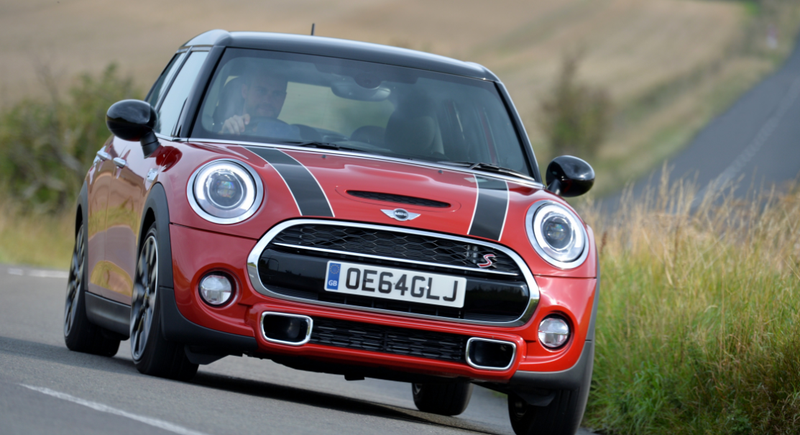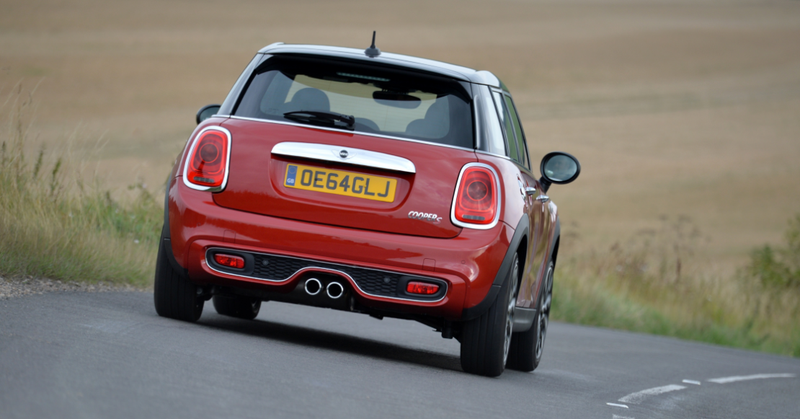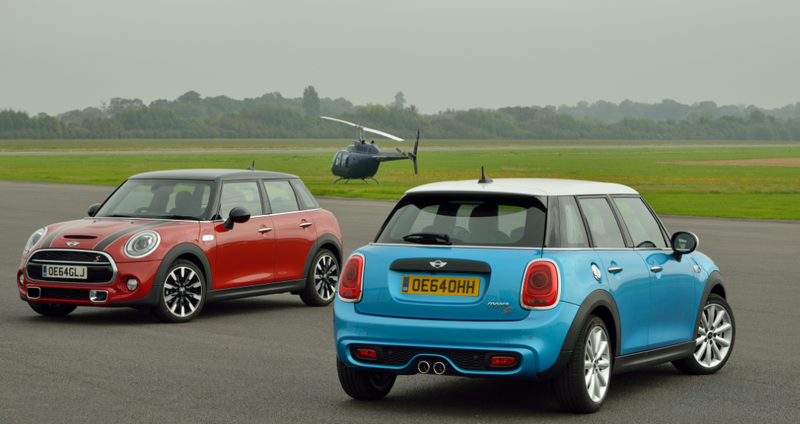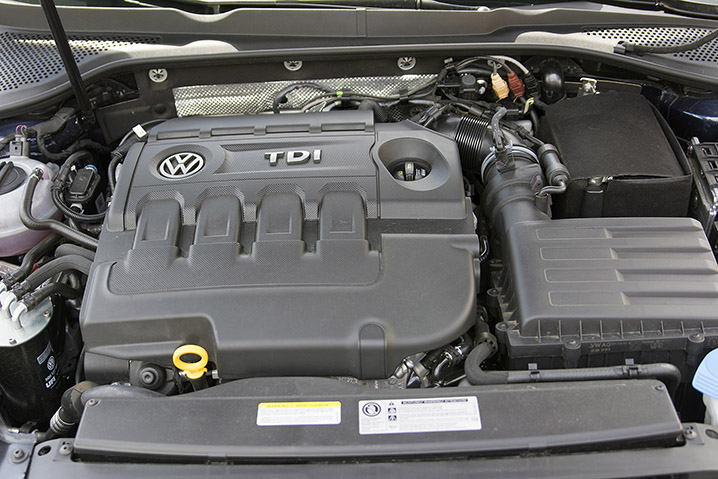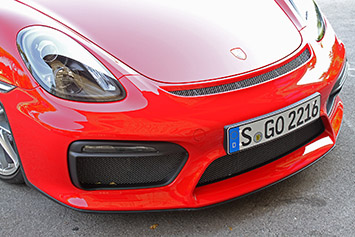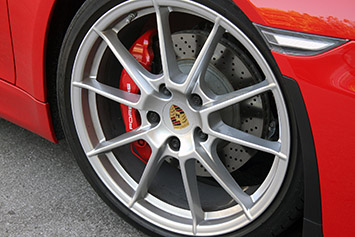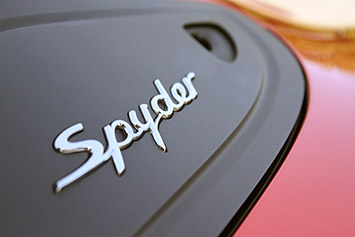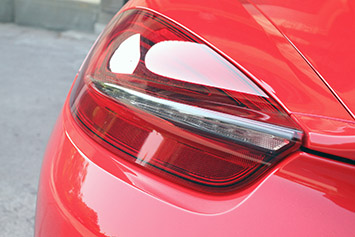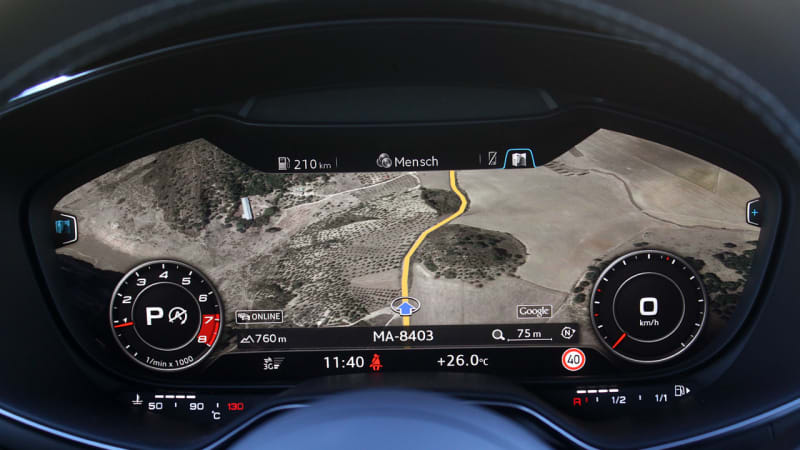The Mini Cooper isn’t for everyone, but it’s not supposed to
be. If you can deal with the cutesy-retro looks and the relatively small size,
you’re in for one of the most fun and surprisingly practical motoring
experiences around. What do you need to know before you buy a Mini Cooper?
Don’t worry, we’ll tell you everything right here in the Ultimate Buyer’s
Guide.
BMW has been cranking out Minis since 2001 now, but the
latest Cooper — completely redesigned for the 2014 model year — is the most
BMW-y one yet. It rides on a new platform that will underpin several BMW and
Mini models, and it uses all-BMW turbocharged engines for the first time. More
than ever, it feels like a small, front-wheel driver Bimmer inside
and out.
The downside is that it’s bigger than any of its Mini
predecessors, and while it has an extensive array of options and
customizability, it can get quite a bit more expensive than many of its
hatchback competitors.
What It’s Like To Drive:
Our testers have given the new Cooper and Cooper S high
marks for a vastly more refined interior than its predecessors, a more balanced
better ride, punchy turbo power and tons of grip on the road. While Mini’s
claim of “go kart-like” handling is a bit ridiculous, we can’t deny that the
Cooper and Cooper S are a ton of fun to drive at any trim level.
In S trim the Mini Cooper manages to make good use of the
extra power and a suspension tuned towards performance to keep it nicely
planted in the turns when taking on backroads, but it’s a bit too subtle for
our taste.
If subtle isn’t your style, we found the
JCW Mini Cooper to be appropriately loud, although not
the best handling car in its class and a little on the pricey side.
Surprisingly, the most fun Mini Cooper is probably the
cheapest. With its simple three-cylinder turbo engine and a six-speed manual
its light and straightforward and a bit more of the manic Cooper we’ve loved in
the past.
What’s New About The 2016 Mini Cooper:
An all-new 2-door hardtop Cooper joined us for the 2014
model year. Built on a completely different, larger platform, the new Cooper
offers more interior space, revised styling, better interior quality, a nicer
ride, and better fuel economy than the outgoing model.
So, its a pretty big step forward. Except that it got bigger
– par for the course for new cars but a bit odd for a car called a Mini.
The following year, 2015, brought a John Cooper Works trim
level to the 2-door, and the 4-door model built on the new platform debuted.
Changes for the 2016 model year were insignificant.
Powertrain Breakdown
The new 2.0-liter BMW engine gives the Cooper S 189 horses
and 207 lb-ft of torque. These numbers sound fine for a car this small, but
as Patrick George explains, the engine isn’t all that
exciting:
It just never really feels that quick. This new engine is
smooth and punchy, with plenty of low and mid-range torque, but it kind of runs
out of steam up top. It feels like it should be faster. It’s never manic in its
power delivery the way some hot hatches are .
The tuned engine by John Cooper Works puts out nearly 40
more horses, though, so that might be the one to get if you want to maximize
driving excitement. But at over 30 grand, that’s a hard pill to swallow.
The base car’s little 1.5-liter three cylinder makes only
135 horsepower, but it’s actually pretty fun to wring out, and the handling
makes it pretty fun in the corners.
All engines come mated to either a 6-speed automatic or a
6-speed manual.
2016 Mini Cooper Engine Options
|
Engine
|
Max Horsepower (hp)
|
Max Torque (lb-ft)
|
1.5L Turbo I3
|
134 @ 4400 rpm
|
162 @ 1250 rpm
|
2.0L Turbo I4
|
189 @ 4700 rpm (2&4 door S hardtop)
228 @ 5200 rpm (JCW tuned))
|
207 @ 1250 rpm (2&4 door hardtop)
236 @ 1250 rpm (JCW tuned)
|
Fuel Economy Breakdown
That little inline-3 really struts its stuff on the fuel
economy front, scoring 39 miles per gallon on the highway on manual models.
But even the performance-oriented turbo engines will let you
enjoy over 30 MPG on the highway, so no matter what you choose, you don’t have
to feel guilty about spending your whole day carving canyon roads.
2016 Mini Cooper Fuel Economy Ratings (City/Highway/Combined)
|
|
1.5L I3
|
2.0L Turbo I4
|
Fuel Economy- Manual
|
28/39/32 (2-door)
29/39/33 (4-door)
|
23/33/27 (2&4 door)
25/33/28 (JCW)
|
Fuel Economy- Automatic
|
27/37/31 (2&4 door)
|
26/33/29 (2&4 door)
23/31/26 (JCW)
|
Trim Level Breakdown
The Mini Cooper can be configured in lots of different ways,
but the base trim levels are: Cooper, Cooper S, and John Cooper Works. Front
suspension for all Coopers is a MacPherson strut design while the rear is a
multi-link setup. All Minis get electric power steering.
Cooper: Starts at $20,700 for 2-door and $21,700
for 4-door. Notable standard features: Mini driving modes, dynamic
traction control with electronic differential lock, 15” alloy wheels, 4-speaker
audio system, rain sensors, auto headlights, leatherette seats, unique chrome
grille. Notable options: 6-speed automatic transmission ($1,250); Cold Weather Package:
Heated seats, power folding mirrors ($750); Sport Package: Sport seats, Dynamic
Damper Control, LED headlights, upgraded wheels, white turn signals ($1,500);
Premium Package: Harmon Kardon sound system, panoramic sunroof, automatic
AC($1,800); Media Package: enhanced Bluetooth with USB adapter, Visual Boost,
Center Armrest with cellphone docking ($750); Wired Package: Center armrest,
Navigation system, enhanced Bluetooth, Visual Boost XL, real-time traffic info
($1,750); JCW exterior package: JCW aero kit, spoiler, white turn signals, 17”
JCW wheels ($3,250).
Cooper S: Starts at $24,100 for the 2-door and
$25,100 for the 4-door. Notable standard features over Cooper: 2.0-liter turbo
I4, hood scoop, brake ducts, run-flat tires, LED fog lights, 6-speaker audio
system, sports seats, 16” alloy wheels, black grille, center exhaust. Notable
options: 6-speed automatic transmission ($1,250); Sport automatic transmission
($1,500); JCW exterior package ($2,500); Other options similar to base Cooper.
John Cooper Works: 2-door starts at $30,600. No
4-door available. Notable standard features over Cooper S: Tuned 2.0-liter
turbo I4, JCW Exterior Package, JCW interior trim, LED headlights, JCW sports
seats, unique sport steering wheel, 17” JCW wheels, white turn signals, rear
spoiler, unique headliner. Notable options: Options similar to Cooper S (no
Sport Package or non-sport auto transmission available).
The Mini Cooper isn’t for everyone, but it’s not supposed to
be. If you can deal with the cutesy-retro looks and the relatively small size,
you’re in for one of the most fun and surprisingly practical motoring
experiences around. What do you need to know before you buy a Mini Cooper?
Don’t worry, we’ll tell you everything right here in the Ultimate Buyer’s
Guide.
BMW has been cranking out Minis since 2001 now, but the
latest Cooper — completely redesigned for the 2014 model year — is the most
BMW-y one yet. It rides on a new platform that will underpin several BMW and
Mini models, and it uses all-BMW turbocharged engines for the first time. More
than ever, it feels like a small, front-wheel driver Bimmer inside
and out.
The downside is that it’s bigger than any of its Mini
predecessors, and while it has an extensive array of options and
customizability, it can get quite a bit more expensive than many of its
hatchback competitors.
What It’s Like To Drive:
Our testers have given the new Cooper and Cooper S high
marks for a vastly more refined interior than its predecessors, a more balanced
better ride, punchy turbo power and tons of grip on the road. While Mini’s
claim of “go kart-like” handling is a bit ridiculous, we can’t deny that the
Cooper and Cooper S are a ton of fun to drive at any trim level.
In S trim the Mini Cooper manages to make good use of the
extra power and a suspension tuned towards performance to keep it nicely
planted in the turns when taking on backroads, but it’s a bit too subtle for
our taste.
If subtle isn’t your style, we found the
JCW Mini Cooper to be appropriately loud, although not
the best handling car in its class and a little on the pricey side.
Surprisingly, the most fun Mini Cooper is probably the
cheapest. With its simple three-cylinder turbo engine and a six-speed manual
its light and straightforward and a bit more of the manic Cooper we’ve loved in
the past.
What’s New About The 2016 Mini Cooper:
An all-new 2-door hardtop Cooper joined us for the 2014
model year. Built on a completely different, larger platform, the new Cooper
offers more interior space, revised styling, better interior quality, a nicer
ride, and better fuel economy than the outgoing model.
So, its a pretty big step forward. Except that it got bigger
– par for the course for new cars but a bit odd for a car called a Mini.
The following year, 2015, brought a John Cooper Works trim
level to the 2-door, and the 4-door model built on the new platform debuted.
Changes for the 2016 model year were insignificant.
Powertrain Breakdown
The new 2.0-liter BMW engine gives the Cooper S 189 horses
and 207 lb-ft of torque. These numbers sound fine for a car this small, but
as Patrick George explains, the engine isn’t all that
exciting:
It just never really feels that quick. This new engine is
smooth and punchy, with plenty of low and mid-range torque, but it kind of runs
out of steam up top. It feels like it should be faster. It’s never manic in its
power delivery the way some hot hatches are .
The tuned engine by John Cooper Works puts out nearly 40
more horses, though, so that might be the one to get if you want to maximize
driving excitement. But at over 30 grand, that’s a hard pill to swallow.
The base car’s little 1.5-liter three cylinder makes only
135 horsepower, but it’s actually pretty fun to wring out, and the handling
makes it pretty fun in the corners.
All engines come mated to either a 6-speed automatic or a
6-speed manual.
2016 Mini Cooper Engine Options
|
Engine
|
Max Horsepower (hp)
|
Max Torque (lb-ft)
|
1.5L Turbo I3
|
134 @ 4400 rpm
|
162 @ 1250 rpm
|
2.0L Turbo I4
|
189 @ 4700 rpm (2&4 door S hardtop)
228 @ 5200 rpm (JCW tuned))
|
207 @ 1250 rpm (2&4 door hardtop)
236 @ 1250 rpm (JCW tuned)
|
Fuel Economy Breakdown
That little inline-3 really struts its stuff on the fuel
economy front, scoring 39 miles per gallon on the highway on manual models.
But even the performance-oriented turbo engines will let you
enjoy over 30 MPG on the highway, so no matter what you choose, you don’t have
to feel guilty about spending your whole day carving canyon roads.
2016 Mini Cooper Fuel Economy Ratings (City/Highway/Combined)
|
|
1.5L I3
|
2.0L Turbo I4
|
Fuel Economy- Manual
|
28/39/32 (2-door)
29/39/33 (4-door)
|
23/33/27 (2&4 door)
25/33/28 (JCW)
|
Fuel Economy- Automatic
|
27/37/31 (2&4 door)
|
26/33/29 (2&4 door)
23/31/26 (JCW)
|
source: http://buyersguide.jalopnik.com/mini-cooper-the-ultimate-buyers-guide-1730774823
by David Tracy
http://www.boscheuropean.com

